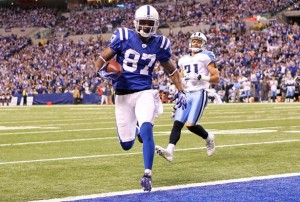[Five years ago, my friend and Pro-Football-Reference.com founder Doug Drinen wrote the predecessor to todaay’s article, but refused to go with this title. The principles remain fundamental to advanced analysis of any sport, so today I’ll be revisiting them with current examples.]
Our brains are really good at making connections and finding patterns. In The Believing Brain, Michael Shermer argued that we’ve made it to where we are today precisely because of our ability to do just that:
A human ancestor hears a rustle in the grass. Is it the wind or a lion? If he assumes it’s the wind and the rustling turns out to be a lion, then he’s not an ancestor anymore. Since early man had only a split second to make such decisions, Mr. Shermer says, we are descendants of ancestors whose “default position is to assume that all patterns are real; that is, assume that all rustles in the grass are dangerous predators and not the wind.”
Of course, not all patterns are real, and sometimes that rustle is just the sound of the wind. Just because you see a surprising split — maybe a player dominated the second half of the season after a slow start — doesn’t mean that the “trend” is real. For example, here are some splits from the 2011 season:
Reggie Wayne was much better against teams that wear the color blue than when facing teams that have no blue in their uniforms. Here is his weekly production (the last column represents his fantasy points) when playing against teams that do not have blue as a color in their uniform:
| Week | Opp | Rec | Yd | TD | FP |
|---|---|---|---|---|---|
| 17 | jax | 8 | 73 | 0 | 15.3 |
| 5 | kan | 4 | 77 | 0 | 11.7 |
| 6 | cin | 5 | 58 | 0 | 10.8 |
| 2 | cle | 4 | 66 | 0 | 10.6 |
| 4 | tam | 4 | 59 | 0 | 9.9 |
| 14 | rav | 4 | 41 | 0 | 8.1 |
| 9 | atl | 4 | 30 | 0 | 7.0 |
| 7 | nor | 3 | 36 | 0 | 6.6 |
| 3 | pit | 3 | 24 | 0 | 5.4 |
| 10 | jax | 3 | 13 | 0 | 4.3 |
| Avg | 4.2 | 47.7 | 0 | 9.0 |
Conversely, Wayne nearly doubled his fantasy production when playing against teams who, like his Colts, have blue in their uniforms:
| Week | Opp | Rec | Yd | TD | FP |
|---|---|---|---|---|---|
| 16 | htx | 8 | 106 | 1 | 24.6 |
| 1 | htx | 7 | 106 | 1 | 23.6 |
| 12 | car | 5 | 122 | 1 | 23.2 |
| 15 | oti | 3 | 33 | 1 | 12.3 |
| 8 | oti | 5 | 61 | 0 | 11.1 |
| 13 | nwe | 5 | 55 | 0 | 10.5 |
| Avg | 5.5 | 80.5 | 0.7 | 17.6 |
Wayne isn’t the only one with curious splits. Robert Meachem has had seemingly inconsistent production over the years, but that’s only because you haven’t been looking for the right clues. Against teams with an odd number of letters in their team name (say, the Lions or Falcons), he had 451 yards and 5 touchdowns in eight games. Against teams with an even number of letters, in 8 games, he gained only 169 yards and 1 touchdown.
Odd
| Week | Opp | Rec | Yd | TD | FP |
|---|---|---|---|---|---|
| 13 | det | 3 | 119 | 1 | 21.7 |
| 1 | gnb | 5 | 70 | 1 | 18 |
| 16 | atl | 3 | 75 | 1 | 16.5 |
| 10 | atl | 2 | 69 | 1 | 14.9 |
| 2 | chi | 4 | 10 | 1 | 11.7 |
| 4 | jax | 4 | 59 | 0 | 9.9 |
| 7 | clt | 2 | 27 | 0 | 4.6 |
| 15 | min | 2 | 22 | 0 | 4.6 |
| Avg | 3.1 | 56.4 | 0.6 | 12.7 |
Even
| Week | Opp | Rec | Yd | TD | FP |
|---|---|---|---|---|---|
| 3 | htx | 5 | 51 | 1 | 16.1 |
| 5 | car | 4 | 38 | 0 | 7.8 |
| 17 | car | 2 | 30 | 0 | 5 |
| 6 | tam | 1 | 23 | 0 | 3.3 |
| 8 | ram | 2 | 12 | 0 | 3.2 |
| 14 | oti | 1 | 15 | 0 | 2.5 |
| 12 | nyg | 0 | 0 | 0 | 0 |
| 9 | tam | 0 | 0 | 0 | 0 |
| Avg | 1.9 | 21.1 | 0.1 | 4.7 |
The takeaway, of course: play Meachem against the Lions and Vikings, but not the Panthers or Buccaneers. He’s nearly three times as good against those odd-lettered teams.
Other players have alphabetical splits. Jacoby Jones was a much worse fantasy player against teams in the back half of the alphabet than teams in the front half:
M through Z
| Week | Opp | Rec | Yd | TD | FP |
|---|---|---|---|---|---|
| 6 | ram | 1 | 35 | 1 | 10.5 |
| 7 | min | 4 | 63 | 0 | 10.3 |
| 9 | sdg | 1 | 21 | 1 | 9.1 |
| 14 | rai | 2 | 29 | 0 | 4.9 |
| 10 | min | 1 | 9 | 0 | 1.9 |
| 1 | nor | 1 | 1 | 0 | 1.1 |
| 13 | nyg | 0 | 0 | 0 | 0 |
| 11 | tam | 0 | 0 | 0 | 0 |
| Avg | 1.3 | 19.8 | 0.3 | 4.7 |
A through L
| Week | Opp | Rec | Yd | TD | FP |
|---|---|---|---|---|---|
| 5 | atl | 5 | 140 | 1 | 25 |
| 16 | chi | 4 | 50 | 2 | 21 |
| 12 | det | 3 | 94 | 1 | 18.4 |
| 17 | det | 6 | 89 | 0 | 14.9 |
| 4 | den | 3 | 48 | 1 | 13.8 |
| 3 | chi | 4 | 24 | 0 | 6.4 |
| 15 | kan | 2 | 17 | 0 | 3.7 |
| 2 | car | 1 | 15 | 0 | 2.5 |
| Avg | 3.5 | 59.6 | 0.6 | 13.2 |
Other players seem to really feed off the history of the game. 18 teams have won a Super Bowl. This made a huge difference for a receiver like Pierre Garcon. He really stepped his game up when he was facing storied franchises like the Chiefs, Patriots and Bucs, but found it hard to get motivated against teams like the Falcons:
Super Bowl Champs
| Week | Opp | Rec | Yd | TD | FP |
|---|---|---|---|---|---|
| 13 | nwe | 9 | 150 | 2 | 36 |
| 5 | kan | 5 | 125 | 2 | 29.5 |
| 4 | tam | 2 | 146 | 2 | 28.6 |
| 3 | pit | 6 | 82 | 0 | 14.2 |
| 14 | rav | 5 | 46 | 0 | 9.6 |
| 7 | nor | 3 | 31 | 0 | 6.1 |
| 8 | oti | 7 | 66 | 0 | 13.6 |
| 6 | cin | 8 | 52 | 0 | 13.2 |
| Avg | 5.6 | 87.3 | 0.8 | 18.9 |
No Lombardis, no motivation
| Week | Opp | Rec | Yd | TD | FP |
|---|---|---|---|---|---|
| 16 | htx | 6 | 50 | 0 | 11 |
| 10 | jax | 3 | 30 | 0 | 7.8 |
| 1 | htx | 3 | 39 | 0 | 6.9 |
| 12 | car | 3 | 34 | 0 | 6.6 |
| 2 | cle | 3 | 28 | 0 | 5.8 |
| 9 | atl | 3 | 22 | 0 | 5.2 |
| 15 | oti | 2 | 24 | 0 | 5.2 |
| 17 | jax | 2 | 22 | 0 | 4.2 |
| Avg | 3.1 | 31.1 | 0 | 6.6 |
In case you’re wondering, no, this isn’t limited to wide receivers. Mark Sanchez averaged 9 more fantasy points per game at home than he did on the road last season. Marshawn Lynch averaged 8 more fantasy points per game in the second half of the season than he did in the first eight games, and Reggie Bush showed a similar split. Christian Ponder completed just 46.5% of his passes in five games against the NFC North, but was at 59.3% against the rest of the league. Carson Palmer went the other way, averaging 7.4 yards per attempt against the rest of the league but a dominant 9.7 yards per pass average against the AFC West. Ryan Fitzpatrick had 10 interceptions in 10 games against non-division foes, but 13 picks in 6 games against the AFC East.
Obviously some splits are real, with reasonable explanations behind them, and they may give legitimate insight into future performance. A quarterback who was much more efficient when his star receiver was in the lineup is probably a split that means something. A running back who averages more yards per carry when a mobile quarterback is in the game is probably a real effect. A receiver who dealt with injuries in the second half of the season may play like he did in the first half the following year once he’s healthy.
But the point is of this post is to remind you that sometimes, a split means nothing at all. Jamaal Charles had an unbelievable second half of the 2009 season, foreshadowing his fantastic 2010 season. But Cleveland’s William Green once had a remarkable second half run, too. He carried the Browns to the playoffs with a great stretch run as a rookie, but flamed out the rest of his career. Percy Harvin had a great second half last season, but it wasn’t as good as Patrick Jeffers’ last eight games of 1999. A young quarterback who improves significantly in the second half of the year may be a sign that the light went on for him, or it may be an artifact of a small sample size.
Despite what our brain tells us, there need not always be an explanation for a crazy split. Sometimes, splits happen.


